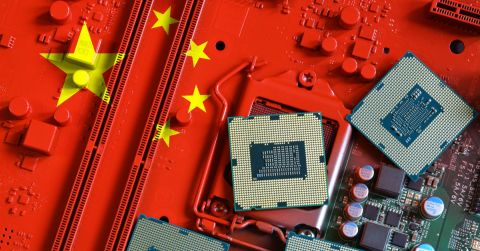What's in the MIPI A-PHY Automotive SerDes Specification?

High speed serial connections are fundamental for fast data transfer in many applications, such as networking equipment, storage, and high resolution video/graphics. With the cost of today’s cars being so heavily driven by electronics, it is surprising that an automotive SerDes specification was unavailable until only recently. In September of this year, the MIPI Alliance released the MIPI A-PHY v1.0 specification for automotive SerDes in order to enforce standardization on high speed serial interfaces for automobile ADAS.
There’s a lot that goes into any new standard, as well as ADAS; the new specification defines interface standards for surround sensor applications, yet it is intended to provide support for higher level MIPI specifications. If you’re an automotive systems designer, keep reading to learn more about the new MIPI A-PHY specifications and how it will interact with other MIPI specifications in new automobiles.
Automotive SerDes Summary
Anytime a new specification comes out, it represents a potentially major shift in the electronics landscape. Automotive SerDes as defined in MIPI A-PHY is addressing contemporary systems design trends, and it will hopefully give OEMs in the automotive electronics industry the confidence needed to integrate many technologies that enhance safety and driver experience.
Standards in the MIPI A-PHY Specification
The table below lists some of the requirements in the MIPI A-PHY specification.

Why Do We Need Automotive SerDes?
It’s fair to ask, what’s the particular problem being solved by the new A-PHY specification? For some time, the interfaces and interactions between other MIPI specifications (C-PHY and D-PHY) and high speed serial links in automobiles were all ad hoc and required some bridge components for data translation. Now with high resolution cameras, displays, around-vehicle sensors, infotainment, and more being standard in new vehicles, an interface addressing this level of integration became necessary.
The goal in developing the MIPI A-PHY specification is two-fold:
-
To simplify system design by allowing other high speed serial protocols (CSI-2, DSI-2, DisplayPort, etc.) to be transmitted over long shared links;
-
To ultimately eliminate the bridge ICs that are currently used to translate between different interfaces.
As can be seen above, the A-PHY specification is meant to provide high speed data transmission with ultra-low error rate. Consolidating other MIPI protocols onto the same physical channel is also quite useful for system simplification. This is where the bridge ICs in these systems can be eliminated, as will be discussed below.
By eliminating the need for bridge ICs and enabling transmission over long-reach serial links, the overall BOM cost can be reduced and designers won’t have to use more complex protocols (e.g., automotive Ethernet) for serial transmission. In total, integration among different devices and protocols on a single physical layer will help systems engineers meet the safety requirements in ISO 26262 and the Automotive Safety Integrity Level (ASIL) requirements.
To see how this new standard can help simplify the design environment in new vehicles, it helps to look at a contemporary use case.
Camera and Display Use Case
The image below shows the idealized use of A-PHY for the near future. This use case shows how data from a camera (CSI-2 input) can be transferred over an A-PHY channel, and the Rx transceiver outputs the data to a display (DSI-2 output). On the PCB, data is transferred directly between the transceivers; the output from the transceiver goes straight into the physical layer, rather than hitting a bridge IC.

Example MIPI A-PHY interconnect. [Modified from: Source]
Contrast this with the current state of affairs, where the protocol between the transceivers is proprietary, or everyone is simply using a different design and protocol. In addition, transmission/reception at each end of the channel is mediated by the bridge ICs.
One example of such a bridge IC is the Renesas ISL76321ARZ. This IC would be responsible for injecting data into a SerDes channel, just like any other serializer IC for SerDes channels, rather than having an MCU or other processor transmit data directly to the destination. These types of components have other useful integrated features, but standardization can eliminate the need for such an interface chip just to provide serial data transmission. An example application circuit showing serial transmission over twisted pair cable is shown below.

Typical application circuit for the Renesas ISL76321ARZ. [Source: ISL76321ARZ datasheet]
Within upcoming new vehicles and in future autonomous vehicles, the MIPI A-PHY protocol will enable sensor fusion by consolidating higher-layer protocols into a single physical channel with fewer mediating components. This need to fuse sensor data over high speed channels is critical for autonomous vehicles, which need high speed data feeds from a range of different sensors. Newer designs for autonomous vehicles will also need to process all of this data and control a vehicle with very low latency. The MIPI A-PHY standard enables these aspects to create a safer and more fulfilling driver experience.
Other Components Needed for Automotive SerDes Design
With the MIPI A-PHY specification being brand new, transceivers that meet the standard are not yet available. However, there are some other components that are needed to ensure new products can meet the standards in the MIPI A-PHY specification.
In addition to MIPI A-PHY-compatible transceiver components, designers will have multiple challenges to confront as new vehicles become moving IoT devices. Some component requirements include:
Once new components for automotive SerDes become available at volume, you’ll have the tools needed to find the right parts when you use the complete set of advanced search and filtration features in Octopart. When you use Octopart’s electronics search engine, you’ll have access to current distributor pricing data, parts inventory, and parts specifications, and it’s all freely accessible in a user-friendly interface. Take a look at our integrated circuits page to find the components you need.
Stay up-to-date with our latest articles by signing up for our newsletter.








